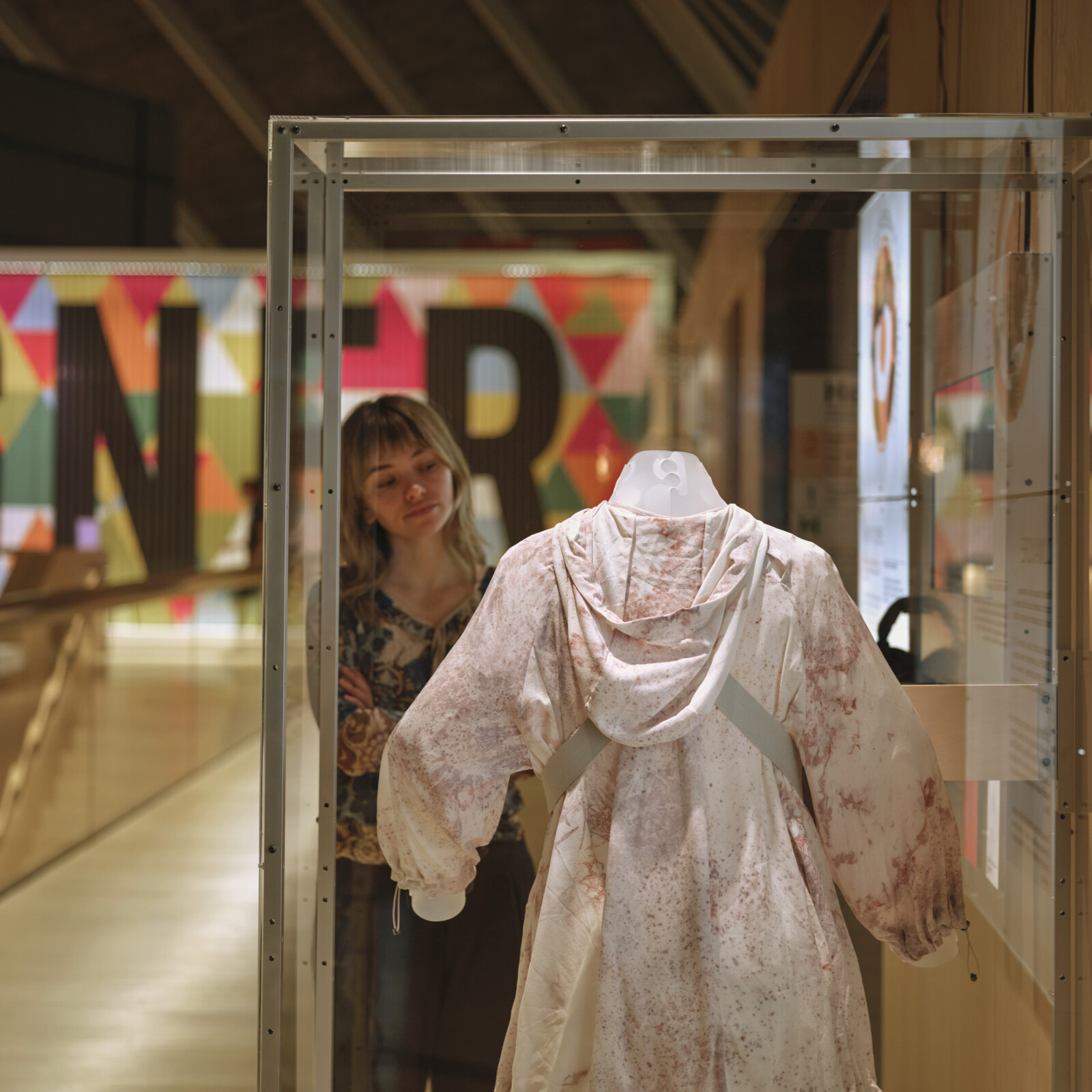
How are clothes dyed? Why are some garments so hard to recycle? What is lyocell?
The fact that fashion is one of the most polluting industries is widely known. But where exactly is this outsized carbon footprint coming from, and how can this information be better understood by the industry and everyday wearers of clothes?
Future Observatory-funded researcher Laetitia Forst is a textile expert whose work confronts these questions. Each stage in the lifecycle of our clothes – from materials used, to manufacturing processes, to garment care and disposal – is accompanied by a number of parameters that can make these clothes more or less environmentally friendly. To demonstrate this complex system, Forst created the Garment Lifecycle Map to break down each stage of a garment’s lifecycle by splitting a circle into segments, each one representing a different stage of manufacture.
The Tomorrow’s Wardrobe curatorial team recognised just how valuable a tool for garment literacy is, and decided it needed to be shared beyond just the textile research world, reaching all visitors to the display. By pairing Forst up with UX designer Jonas Zieher of ACRE Studio, the team commissioned the duo to take the pie chart graphic to the next level: an interactive web-based experience.
From the plain white tee to the sequin party dress, the Garment Lifecycle Map lets visitors navigate through each stage of the item’s life. Visitors to Tomorrow’s Wardrobe will have the opportunity to identify just how influential the decisions made at the beginning of the garment’s manufacture to the end of the garment’s life.
Demystifying how our clothes are made is an important step to raise consumer’s awareness around how clothes are made, but it’s crucial to keep industry stakeholders accountable too in order to identify where the environmental footprint is heaviest, and where research and innovation in the industry is desperately needed.



